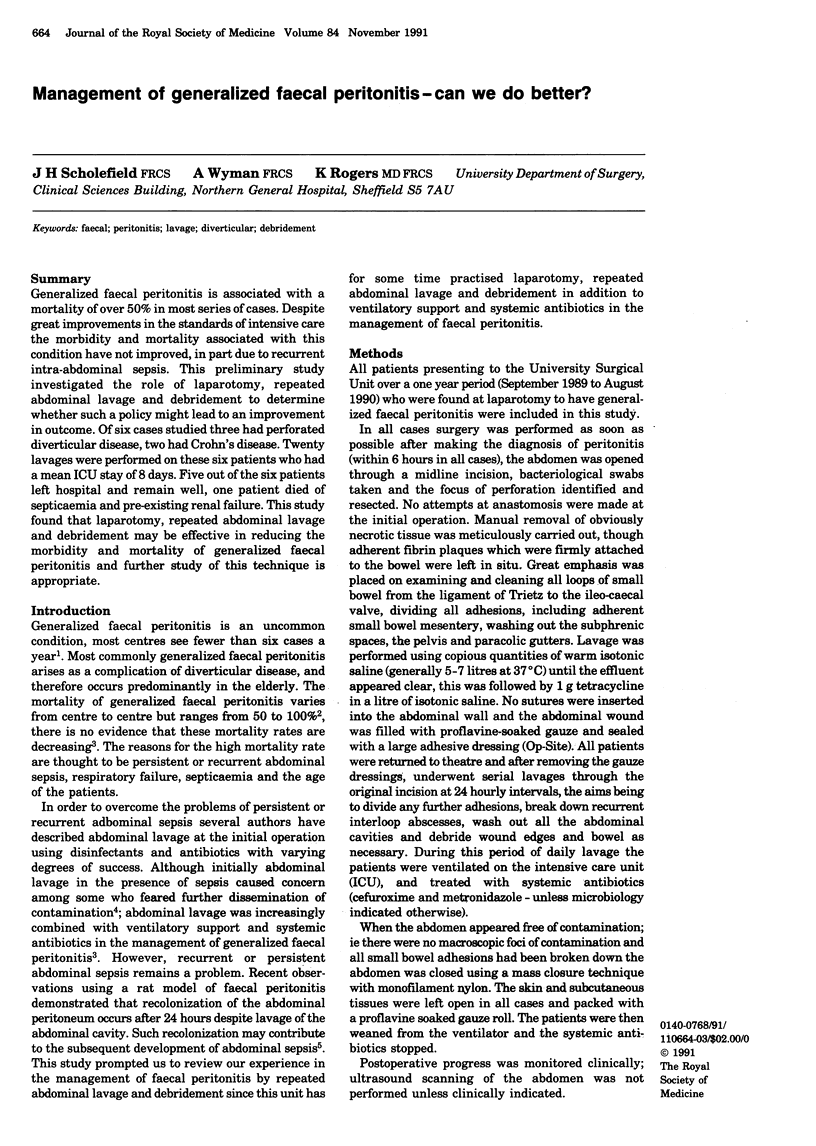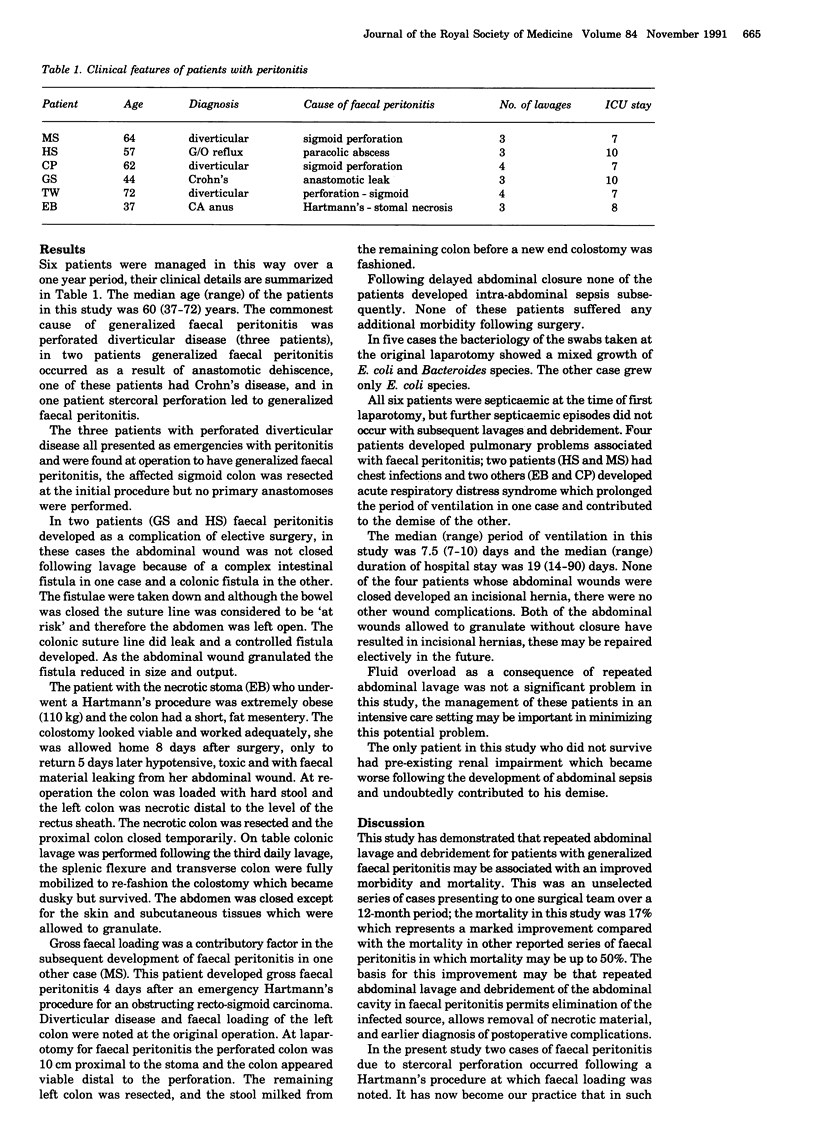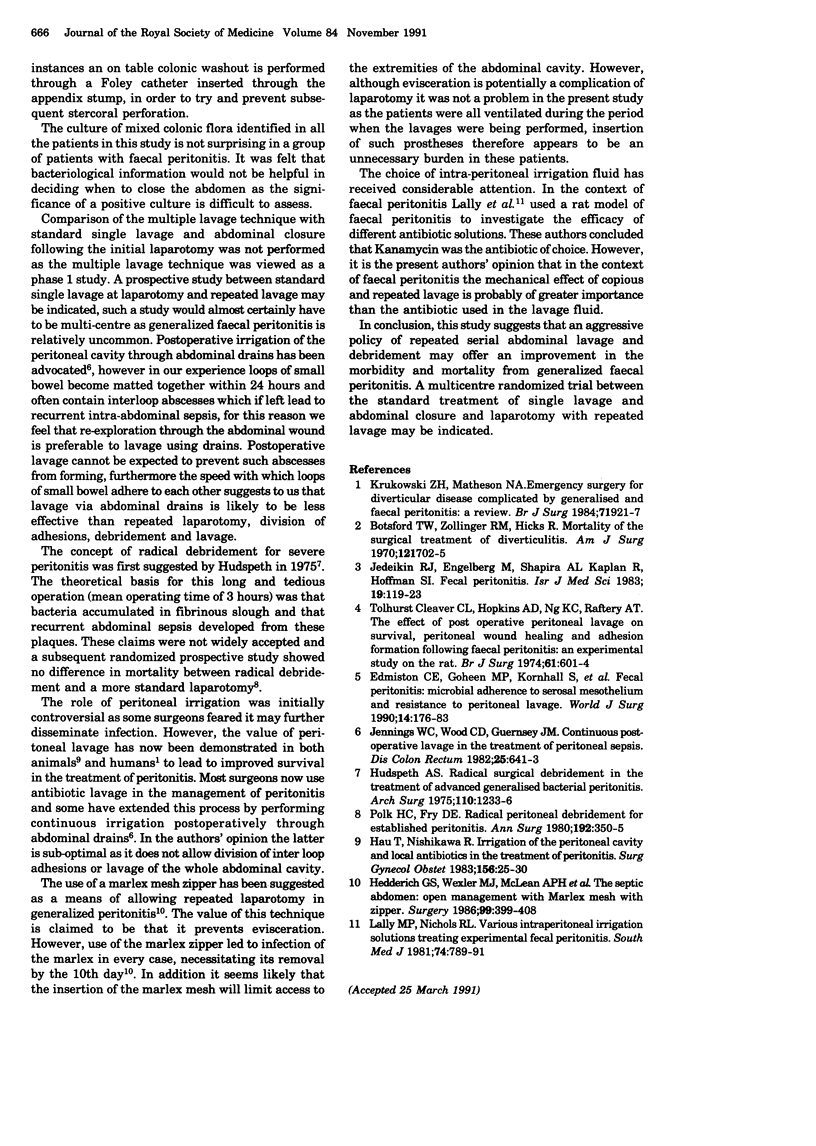Abstract
Generalized faecal peritonitis is associated with a mortality of over 50% in most series of cases. Despite great improvements in the standards of intensive care the morbidity and mortality associated with this condition have not improved, in part due to recurrent intra-abdominal sepsis. This preliminary study investigated the role of laparotomy, repeated abdominal lavage and debridement to determine whether such a policy might lead to an improvement in outcome. Of six cases studied three had perforated diverticular disease, two had Crohn's disease. Twenty lavages were performed on these six patients who had a mean ICU stay of 8 days. Five out of the six patients left hospital and remain well, one patient died of septicaemia and pre-existing renal failure. This study found that laparotomy, repeated abdominal lavage and debridement may be effective in reducing the morbidity and mortality of generalized faecal peritonitis and further study of this technique is appropriate.
Full text
PDF


Selected References
These references are in PubMed. This may not be the complete list of references from this article.
- Edmiston C. E., Jr, Goheen M. P., Kornhall S., Jones F. E., Condon R. E. Fecal peritonitis: microbial adherence to serosal mesothelium and resistance to peritoneal lavage. World J Surg. 1990 Mar-Apr;14(2):176–183. doi: 10.1007/BF01664870. [DOI] [PubMed] [Google Scholar]
- Hau T., Nishikawa R., Phuangsab A. Irrigation of the peritoneal cavity and local antibiotics in the treatment of peritonitis. Surg Gynecol Obstet. 1983 Jan;156(1):25–30. [PubMed] [Google Scholar]
- Hedderich G. S., Wexler M. J., McLean A. P., Meakins J. L. The septic abdomen: open management with Marlex mesh with a zipper. Surgery. 1986 Apr;99(4):399–408. [PubMed] [Google Scholar]
- Hudspeth A. S. Radical surgical debridement in the treatment of advanced generalized bacterial peritonitis. Arch Surg. 1975 Oct;110(10):1233–1236. doi: 10.1001/archsurg.1975.01360160071012. [DOI] [PubMed] [Google Scholar]
- Jedeikin R. J., Engelberg M., Shapira A. L., Kaplan R., Hoffman S. Fecal peritonitis. An approach to its management. Isr J Med Sci. 1983 Feb;19(2):119–123. [PubMed] [Google Scholar]
- Jennings W. C., Wood C. D., Guernsey J. M. Continuous postoperative lavage in the treatment of peritoneal sepsis. Dis Colon Rectum. 1982 Oct;25(7):641–643. doi: 10.1007/BF02629531. [DOI] [PubMed] [Google Scholar]
- Lally K. P., Nichols R. L. Various intraperitoneal irrigation solutions in treating experimental fecal peritonitis. South Med J. 1981 Jul;74(7):789-91, 798. doi: 10.1097/00007611-198107000-00006. [DOI] [PubMed] [Google Scholar]
- Polk H. C., Jr, Fry D. E. Radical peritoneal debridement for established peritonitis. The results of a prospective randomized clinical trial. Ann Surg. 1980 Sep;192(3):350–355. doi: 10.1097/00000658-198009000-00010. [DOI] [PMC free article] [PubMed] [Google Scholar]
- Tolhurst Cleaver C. L., Hopkins A. D., Kee Kwong K. C., Raftery A. T. The effect of postoperative peritoneal lavage on survival, peritoneal wound healing and adhesion formation following fecal peritonitis: an experimental study in the rat. Br J Surg. 1974 Aug;61(8):601–604. doi: 10.1002/bjs.1800610804. [DOI] [PubMed] [Google Scholar]


